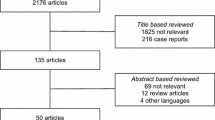Abstract
We investigated the extent and duration of the haemodynamic effects of two regimens of molsidomine, i.e. two tablets of a standard regimen consisting of 4 mg given 6 h apart and one tablet of 16 mg in sustained-release form once daily in 13 patients with chronic congestive heart failure using a placebo-controlled, randomized, double-blind and crossover protocol over a period of 12 h. Both regimens significantly affected systolic, mean and diastolic pulmonary arterial pressure (reductions of up to 15%), right atrial pressure (reductions of up to 35%) and total pulmonary resistance (reductions of up to 18%). The lower dose achieved its maximum action after about 1 h and remained effective for 2 h, whereas the higher dose in sustained-release form showed maximal efficacy at 2 h and remained active even at 12 h. In contrast, only minor changes in arterial blood pressure, systemic vascular resistance and cardiac output were observed on both regimens, almost exclusively at 2 h. Heart rate was not affected by either of the regimens tested. Neither regimen led to any untoward adverse effects. Thus, molsidomine is a potent vasodilating agent which, apart from its effects on preload, also acts on pulmonary arterial and right atrial pressures, leaving systemic circulation largely unaffected on the regimens tested. Administered on its own, it is therefore suitable for treatment of congestive heart failure.
Similar content being viewed by others
References
Massie BM (1992) Angiotensin-converting enzyme inhibitors as cardioprotective agents. Am J Cardiol 70:10I-17I
Kleber FX, Doering W (1991) Prognosis of mild chronic heart failure: effect of the ACE-inhibitor captopril. Herz 16 (Special issue I): 283–293
Jugdutt BI (1992) Role of nitrates after acute myocardial infarction. Am J Cardiol 70:82B-87B
Cohn JN (1992) Mechanisms of action and efficacy of nitrates in heart failure. Am J Cardiol 70:88B-92B
Rudolph W (1991) Dirschinger J Clinical comparison of nitrates and sydnonimines. Eur Heart J 12 [Suppl E]:33–41
Needleman P, Johnson EM (1973) Mechanism of tolerance development to organic nitrates. J Pharmacol Exp Ther 184(3):709–715
Ignarro LJ, Lippton H, Edwards JC, Baricos WH, Hyman AL, Kadowitz PJ, Gruetter CA (1981) Mechanism of vascular smooth muscle relaxation by organic nitrates, nitrites, nitroprusside and nitric oxide: evidence for the involvement of S-nitrosothiols as active intermediates. J Pharmacol Exp Ther 218:739–749
Blasini R, Reiniger G, Brügmann U, Rudolph W. (1984) Circumvention of tolerance development to isosorbide dinitrate through use of an interval regimen. Herz 9: 166–170
Fox KM, Dargie HJ, Deanfield J, Maseri A (1991) Avoidance of tolerance and lack of rebound with intermittent dose titrated transdermal glyceryl trinitrate. Br Heart J 66:151–155
Elkayam U, Roth A, Mehra A, Ostrzega E, Shotan A, Kulick D, Jamison M, Johnson JV, Rahimtoola SH (1991) Randomized study to evaluate the relation between oral isosorbide dinitrate dosing interval and the development of early tolerance to its effect on left ventricular filling pressure in patients with chronic heart failure. Circulation 84:2040–2048
Jordan RA, Seth L, Casebolt P, Hayes MJ, Wilen MM, Franciosa J (1986) Rapidly developing tolerance to transdermal nitroglycerin in congestive heart failure. Ann Intern Med 104(3):295–298
Beyerle A, Reiniger G, Rudolph W (1990) Long-acting, marked antiischemic effect maintained unattenuated during long-term interval treatment with once-daily isosorbide-5-mononitrate in sustained-release form. Am J Cardiol 65:1434–1437
Lehmann G, Reiniger G, Haase H-U, Rudolph W (1991) Enhanced effectiveness of sustained-release forms of isosorbide dinitrate and diltiazem for stable angina pectoris. Am J Cardiol 68:983–990
Blasini R, Brügmann U, Reiniger G, Rudolph W (1985) Long-term treatment of exercise-induced angina pectoris with once-daily administration of 120 mg isosorbide dinitrate in sustained-release form — comparison of monotherapy and combined therapy with atenolol and nifedipine. Herz 10:163–171
Beyerle A, Lehmann G, Reiniger G, Rudolph W (1994) No loss of action with the nitrate-like substance molsidomine during established nitrate tolerance. J Vasc Med Biol 4:260–264
Feelisch M, Ostrowski J, Noack E (1989) On the mechanism of NO-release from sydnonimines. J Cardiovasc Pharmacol 14 [Suppl 11]:13–22
Kukovetz WR, Holzmann S (1985) Mechanism of vasodilatation by molsidomine. Am Heart J 109:637–640
Bassenge E, Zanzinger J (1992) Nitrates in different vascular beds, nitrate tolerance, and interactions with endothelial function. Am J Cardiol 70:23B-29B
Ostrowski J, Resag K (1985) Pharmacokinetics of Molsidomine in Humans. Am Heart J 109: 641–643
Degré S, Sobolski J, Berkenboom G, Abramowicz M, Vandermoten P, Stoupel E (1985) Comparison of the influences of nitrates, molsidomine and SIN-1, a molsidomine metabolite in acute coronary insufficiency. Bibl Cardiol 39:129–134
Hall D, Zeitler H, Rudolph W (1992) Counteraction of the vasodilator effects of enalapril by aspirin in severe heart failure. J Am Coll Cardiol 20:1549–1555
Ibrahim TM, Unger PH, Sobolski J, Depelchin P, Jottrand M, Degré S (1989) Hemodynamic effects of SIN-1 in acute left heart failure. Cardiovasc Drugs Ther 3:557–561
Acar J, Kulas A, Escudier B (1985) Long-term clinical and hemodynamic results of molsidomine treatment in patients with refractory heart failure. Am Heart J 109:685–687
Meinertz T, Brandstätter A, Trenk D, Jähnchen E, Ostrowski J, Gärtner W (1985) Relationship between pharmacokinetics and pharmacodynamics of molsidomine and its metabolites in humans. Am Heart J 109:644–648
Larbig DT, Milstrey HR, Nasse H, Kahle T (1985) The influence of molsidomine on the hemodynamics of patients with chronic heart failure at rest and during exercise. Am Heart J 109:688–690
Berkenboom GM, Sobolski JC, Vandermoten PP, Stoupel EE, Degré SG (1985) Effects of molsidomine on left ventricular dimensions and cardiac function in patients with chronic heart failure. Am Heart J 109:691–693
Ghio S, de Servi S, Perotti R, Eleuteri E, Montemartini C, Specchia G (1992) Different susceptibility to the development of nitroglycerin tolerance in the arterial and venous circulation in humans. Circulation 86:798–802
Malcolm AD (1985) Clinical and hemodynamic effects of the new dilator drug molsidomine. Am Heart J 109:674–677
Author information
Authors and Affiliations
Rights and permissions
About this article
Cite this article
Lehmann, G., Reiniger, G., Beyerle, A. et al. Haemodynamic evaluation of two regimens of molsidomine in patients with chronic congestive heart failure. Eur J Clin Pharmacol 48, 109–114 (1995). https://doi.org/10.1007/BF00192734
Received:
Accepted:
Issue Date:
DOI: https://doi.org/10.1007/BF00192734




